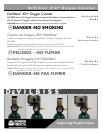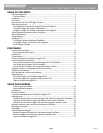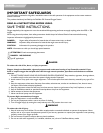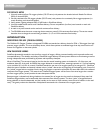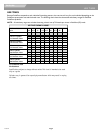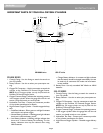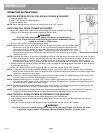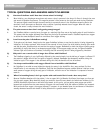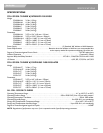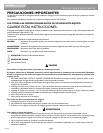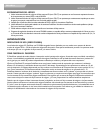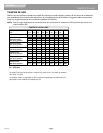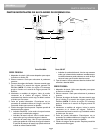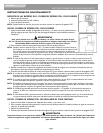
A-535-CYL
5
E N G L I S H
I N T R O D U C T I O N
PHYSICIAN’S NOTES
1 . Use only continuous flow iFill oxygen cylinders (535-CF series) with patients who breathe below 6 Breaths Per Minute
(BPM) or above 40 BPM.
2. Use only continuous flow iFill oxygen cylinders (535-CF series) with patients who consistently fail to trigger equipment (i.e.
mouth breathing with closed soft pallets).
3. Verify patient is getting adequate Pa02 or Sa02 levels in PulseDose delivery.
4. Use only standard nasal cannula with PulseDose delivery. Do not use pediatric (low-flow) nasal cannula or mask with
PulseDose delivery.
5. A mask or any nasal cannula can be used with continuous flow delivery.
6. The PD1000A series electronic conserving device contains a preset 2 LPM continuous flow backup. The service manual
describes how to change the cannula fitting to obtain a 3, 4, 5 or 6 LPM continuous flow backup.
INTRODUCTION
INDICATIONS FOR USE (PD1000A SERIES)
The DeVilbiss iFill Oxygen Cylinders w/integrated PD1000A are intended as a delivery device for 93% ± 3% oxygen from high-
pressure oxygen cylinders. This is an ambulatory device, which allows patients to ambulate longer than they would with a con-
tinuous flow regulator on the same cylinder.
HOW PULSEDOSE WORKS
PulseDose dramatically extends the use time from a supply of oxygen, offering increased mobility with improved comfort and
increased efficiency. The reliability and safety of PulseDose oxygen delivery has been proven effective in clinical testing as well as
through independent tests performed by physicians and respiratory therapists.
What is PulseDose? The concept is based on the fact that the normal breathing pattern is inhalation for 1/3 of the time, and
exhalation about 2/3 of the time. At 20 BPM the oxygen delivered in continuous flow, assuming inspiration is 1/3 of the breathing
cycle, would be 16.5 cc/LPM. As a result, PulseDose extends the use time of an oxygen system by an average of 3:1. PulseDose
senses the start of inhalation and instantly releases a short “pulsed” dose at the very beginning of the breathing cycle. Since all of
the “pulsed” oxygen finds its way deep into the lungs, less oxygen is required to accomplish the same effect than with traditional
continuous flow oxygen systems. This means that a PulseDose oxygen system will last two to four times longer than a continu-
ous flow oxygen system, yet still provide the same therapeutic benefit.
Because oxygen is released only during inhalation, the constant flow of oxygen into the nostrils is eliminated. Many users find
PulseDose oxygen delivery more comfortable than continuous flow delivery systems. The short “pulse” of oxygen delivered
during inhalation is almost undetectable, and the humidity in the room air helps maintain a normal level of moisture in the nasal
cavity. This greatly reduces the discomfort of dehydration associated with a continuous flow oxygen system.



